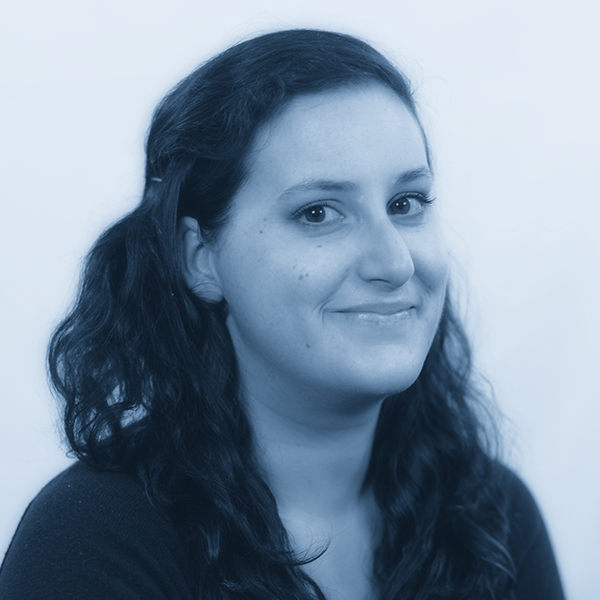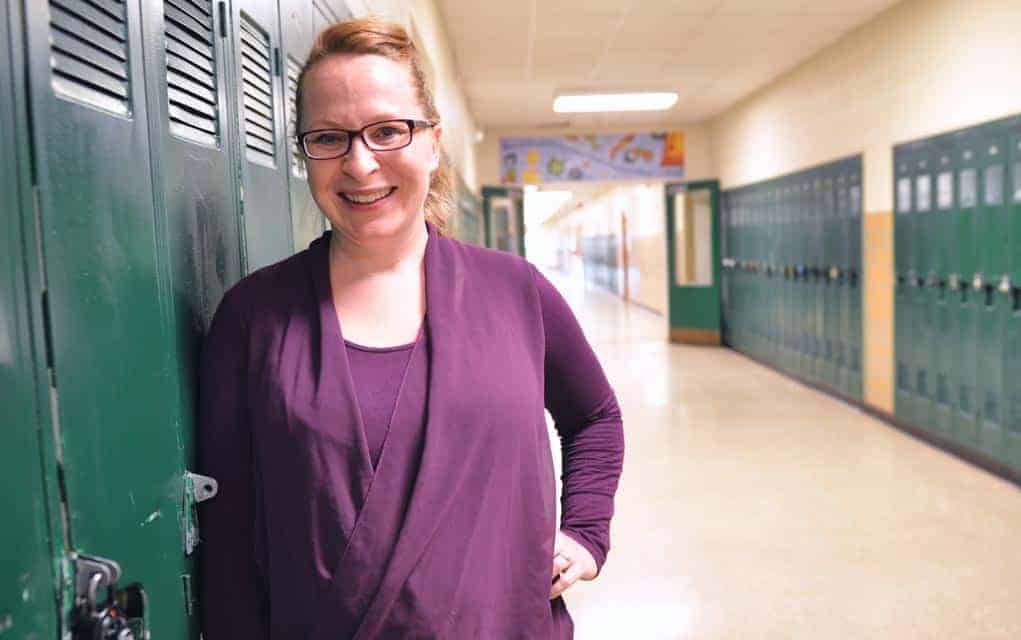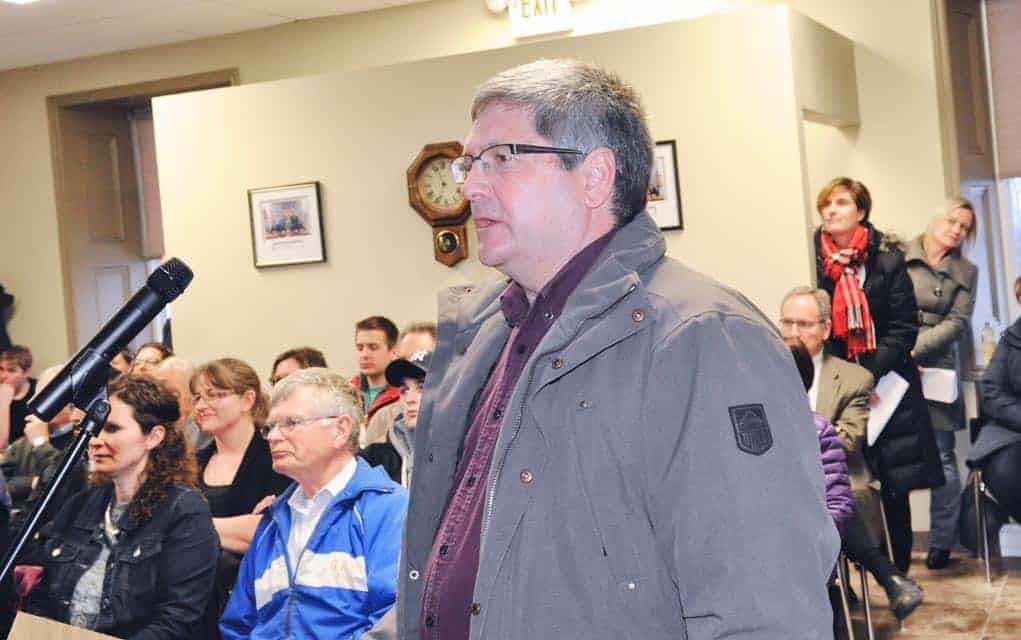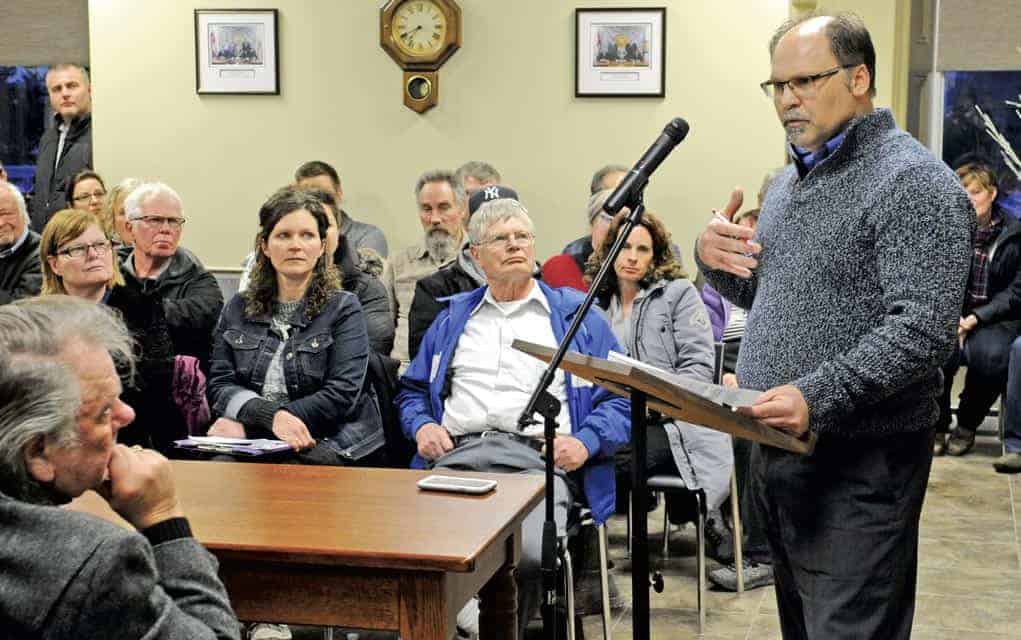Anna Grinberg may not have achieved her dream of becoming an astronaut, but working with them at the European Space Agency in Germany is a close second.
The Elmira District Secondary School graduate spoke to a number of classes at EDSS last week about science.
She says one of the most interesting questions asked by a student is what would happen if a baby was born in space.
“Babies learn to walk, to sit up and to crawl and to walk all against gravity, so I don’t know if you have a kid born in space, you don’t have gravity to help you learn all these things. Developmentally, I think gravity is very important.”
Grinberg studied at the University of Waterloo before she attended the International Space University in Strasburg, France where she completed a year-long Masters, followed by an internship. Every year 50 students from countries all over the world come to study specifically space and how the industry works.
After that she met her husband and he got a job in Germany. She came back to Canada, but eventually decided to join him in Germany, where they have a larger space program. She’s been in Germany for nine years but hopes to move back to Canada.
“Ever since I was a kid I wanted to be an astronaut, but the likelihood of becoming an astronaut is really tiny, like two out of every 10 years. I just wanted to work in the industry, so basically all my schooling was geared to somehow getting a job in space, engineering, studying human physiology for the space industry.”
As an engineer, she works with scientists to design and make hardware to support their experiments. For example, when scientists are in the lab they have everything they need. But that’s not the case once in space.
“You need hardware that can for example give medium or nutrition to plants, or you need somehow to turn on illumination, so we build hardware that makes this little system for their experiments.”
A highlight of her career so far was watching an experiment called Gravity 2 fly. The experiment looked at lentil seeds, how they grow in the first 30 hours of microgravity. She worked on the operations side of that project for seven years, focusing on how to launch the hardware, how to get the crew to work with it, and how to get it to work at their facility.
“I think training astronauts is always exciting. It’s amazing. Especially because most of them are so friendly and such real people, they’re really easy to talk to.”
She works with a facility called the European Modular Cultivation System, which is permanently on the space station. She describes it as about the size of two beer fridges. It has two centrifuges, which are important because that’s a way they can make gravity. It also provides atmosphere and water. Then they’re able to compare microgravity and gravity in space to see how the plants are reacting.
They also launched little experiment containers, eight of them, each about the size of a shoebox.
They have lots of sensors to monitor what amount of oxygen and carbon dioxide they’re getting, as well as a camera and a video camera to watch how they grow. She says a good part of the data comes after, though.
“When those plants were brought back to Earth the scientists then did microscopy on the plants and the roots and they did some DNA analysis to see what had happened.”
Grinberg attributes some of her success to her years spent at EDSS. She says she enjoyed being able to do drama and sports in high school, while also studying science and math.
“The education I got at Elmira was amazing. I had great teachers. I think I just had teachers who were really patient and interested and taught well. I never heard a teacher say ‘that’s not possible.’”
She was also part of the Canadian Space Agency astronaut selection, but unfortunately didn’t make it into the top 72.
The Conestogo native usually returns to Canada once a year. She’s back now for a while because of maternity leave.
She encourages high school students to pursue whatever they’re passionate about.
“Try it and go for it. With a science and engineering degree you can do so much. I think practically speaking I never knew if I’d end up actually working in space and I was lucky that it worked out, but just try it and don’t think you can’t do it.”
She also foresees a big change in space exploration in the future with Elon Musk announcing he’ll orbit the moon with two people paying to accompany him as astronauts.
“Opening up space will I think, first of all, make people more interested in it, but also we’ll see industries we never thought would happen before. … Every so often it’s nice to be reminded how exciting life is. The reason I like space is because there’s still so much to explore and so much we’re trying to figure out. And the same thing exists on Earth, for sure.”









